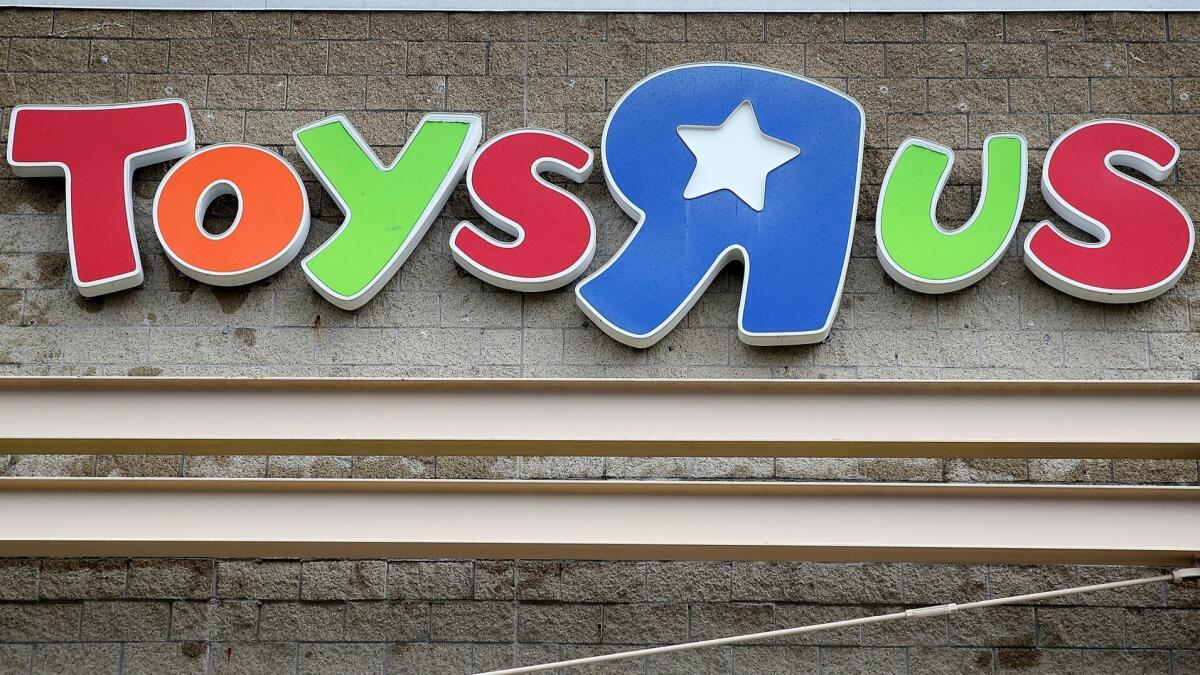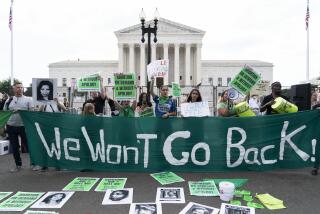Column: How Toys R Us was doomed by a leveraged buyout and shortsighted strategy

Toys R Us Inc. is officially packing up its playroom.
The retailer said Thursday that it intends to liquidate its U.S. business and shut all 735 of its toy stores and Babies R Us stores in the United States. It is exploring a reorganization and sale of its Canada division and other international operations.
The demise of this big-box empire is not exactly surprising, given the chain filed for bankruptcy protection in September and announced plans in January to close up to 182 stores. But it nevertheless represents a remarkable fall for a retailer that still commands a significant share of the toy market and looked to be readying for an initial public offering of stock only a few years ago.
Toymakers brace for disruption from closing of Toys R Us stores »
A full diagnosis of the company would likely identify its massive debt load as its primary illness.
The retailer was saddled with hefty debt in a 2005 leveraged buyout in which Bain Capital, KKR & Co. and Vornado Realty Trust took the retailer private. In recent months, the company’s financial burden went from seriously challenging to unsustainable.
But the toy and baby-gear behemoth was afflicted by many other retail ailments. With rivals looking to get a piece of the sales its disappearance leaves up for grabs, it’s worth pointing out the other missteps that, if avoided, could perhaps have steered Toys R Us to an alternative ending.
• A history of bungling e-commerce. Aug. 9, 2000, may have been a fateful day for Toys R Us. That was the day the company entered a 10-year agreement with Amazon.com Inc. to create a co-branded online store. Toys R Us was to manage the merchandising and buy the inventory; Amazon was to handle the order fulfillment and customer service.
The partnership collapsed years early, in dueling lawsuits. But it probably hurt Toys R Us to lean on Amazon’s strategy and expertise as long as it did, because there was less urgency to build out its own. That partnership effectively put Toys R Us on the path to a long and losing game of catch-up.
• The store environment didn’t change enough. When Charles Lazarus created the Toys R Us brand in 1957, his idea was to build a “toy supermarket,” a self-service format with a vast assortment of products where you could push a cart through the aisles and grab whatever you wanted off the shelves. It was a novel idea then, and it helped Toys R Us become a juggernaut. But here’s the problem: More than 60 years later, Toys R Us stores don’t feel much different.
Toys R Us executives clearly knew that had to change. In recent years, they tried to ramp up in-store events, making their outposts more experiential and giving shoppers a reason to visit more frequently. But the changes weren’t bold enough to stand out in the extremes of today’s shopping environment, when Amazon offers the convenience of speedy doorstep delivery and stores such as American Girl and the Lego Store offer hours of in-store entertainment.
• It didn’t make the most of its baby business. Babies R Us could have been a lifeline for the wider Toys R Us company. It’s a much less seasonal business than toys, providing helpful stability.
Recently, baby business sales have suffered, struggling to compete with the low prices and enticing free-shipping promises of Amazon and Walmart Inc. Toys R Us Chief Executive Dave Brandon didn’t want to get mired in a race to the bottom on price, and that’s a reasonable choice. But then he should have done more to make Babies R Us into an upscale shopping experience with high-touch service. That would have differentiated it from the pack.
It’s true that some of these missed opportunities are easier to spot in hindsight than in real time.
And to be fair, the fall of Toys R Us was hastened by forces out of its control.
Kids are spending more time on tablets and smartphones. That partly reflects more time spent in app-based or other mobile games, which kids are sometimes using in place of physical playthings or video games designed for pricey consoles.
Shorter-term issues added even more pressure. The U.S. movie industry had a crummy 2017, making it tougher to sell toys with silver-screen tie-ins in recent months, and key partners such as Lego AS and Mattel Inc. fell into sales slumps.
Without these suddenly strong external headwinds, Toys R Us’ U.S. business may have been able to battle on a bit longer. And the company said it is in discussions to sell its Canada business in a transaction that could include up to 200 of its U.S. stores, so there is still a possibility the brand will have some U.S. presence.
But in the end, Toys R Us will go down as a cautionary tale in retail — an emblem of the dangers of leveraged buyouts and of strategic shortsightedness.
Halzack is a Bloomberg Gadfly columnist covering the consumer and retail industries.
More to Read
Inside the business of entertainment
The Wide Shot brings you news, analysis and insights on everything from streaming wars to production — and what it all means for the future.
You may occasionally receive promotional content from the Los Angeles Times.










